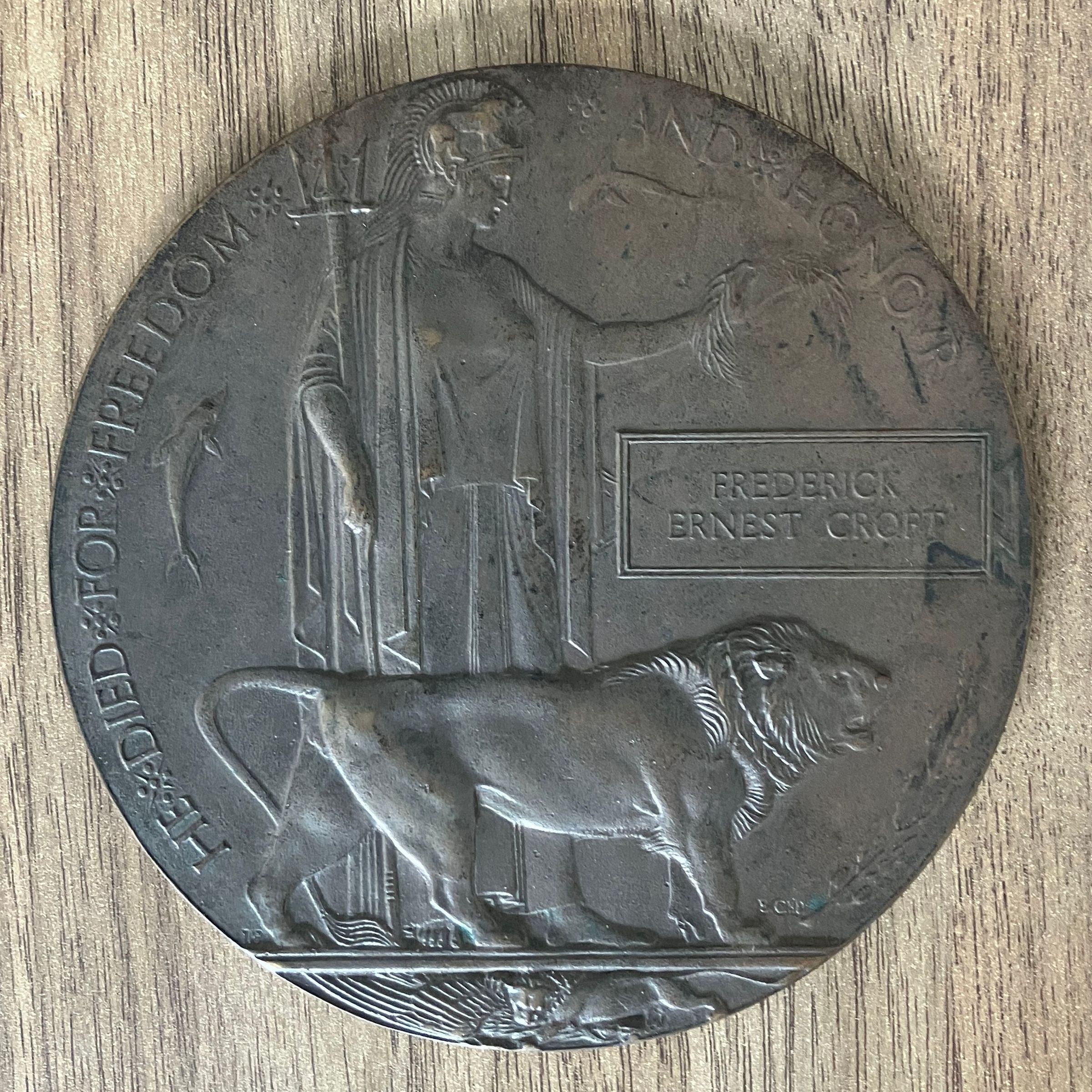Use
Memorial Plaques such as this, were issued to the next-of-kin of all service personnel of the British Empire who were killed as a result of the World War I. Due to its shape and appearance, the plaque earned the nicknames "Dead Man's Penny", the "Death Penny", and the "Widow's Penny".
The production of these plaques (and the scrolls which accompanied it), began in 1919 with 1,355,000 plaques being issued, using a total of 450 tons of bronze, and they continued to be issued into the 1930s to commemorate people who died as a consequence of the Great War.
A competition was held in 1917 for the design of the plaque. Open to all British-born subjects, the rules and application forms were provided by the Admiralty and the War Office. The competition received over 800 entries, and the results of the competition were announced in The Times newspaper on 20th March 1918.
The overall winning design was chosen from two entries, both created by the founder of the Sandon Studies Society, Liberty Buildings, School Lane in Liverpool, Mr Edward Carter Preston (1894-1965).
Due to the difficulty in obtaining metal and the paper during the war, production of the plaque did not begin until December 1918, just one month after the war had ended. The first plaques began production at the Government's Memorial Plaque Factory in Acton at 54-56 Church Road, London W3.
The original design of the plaque did not allow for an "S" to be added to the inscription: “HE DIED...” which appeared around the margin of the plaque. To correct this, the designer, E Carter Preston, changed this part of the plaque design by narrowing the "H" to allow for an “S” to be inserted for female recipients. 1500 memorial plaques were struck with “SHE”, before the mould was changed again, removing the “S” but the narrower “H” remained in the mould. Those plaques with the original wider “H” produced from the original mould design, were mostly issued to Army personnel.
However, the production of the memorial scrolls did not begin until January 1919 and were printed from a wood block by artists at the London County Council Central School of Arts and Crafts.
The finished cast of the plaque bears the initials of Mr E Carter Preston, the artist and designer of the plaque, near the lion's right paw. Some plaques produced in the production process at the original factory based in Acton include a stamped batch number in front of the lion's left, rear paw. While those made at the second factory in Woolwich, Arsenal, have this number placed between the lion's rear left paw and its tail, and a combined WA stamped on the reverse.
